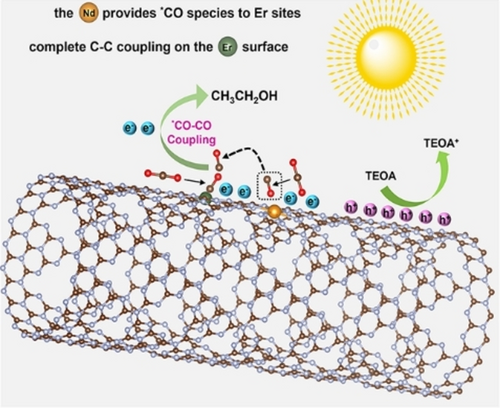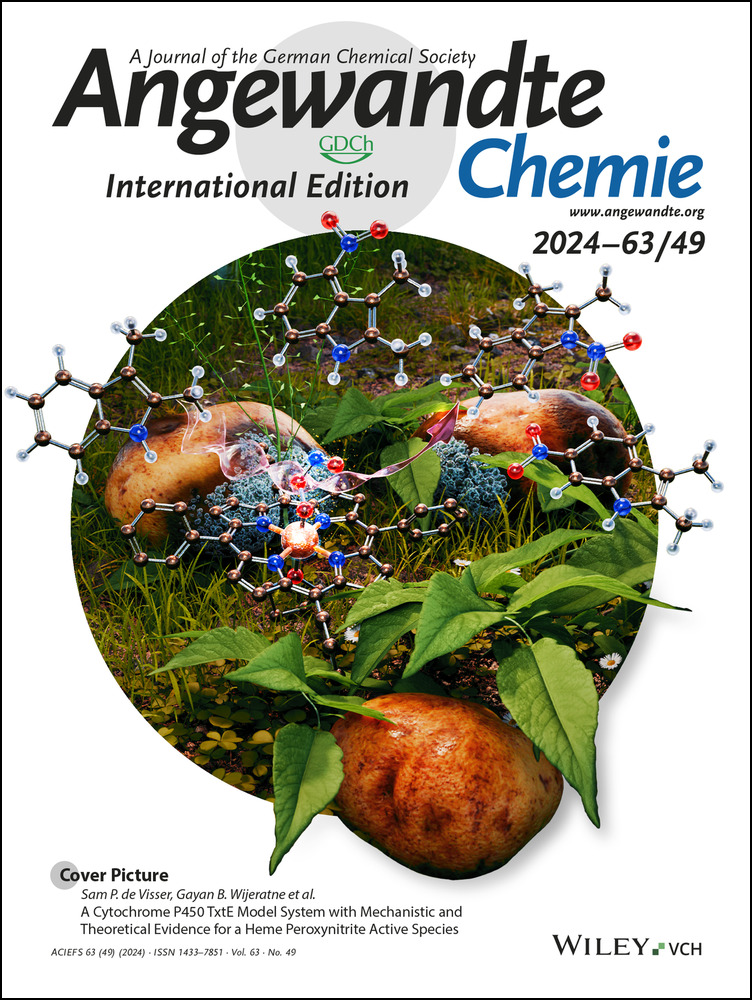Rare Earth Er-Nd Dual Single-Atomic Catalysts for Efficient Visible-light Induced CO2 Reduction to CnH2n+1OH (n=1, 2)
Graphical Abstract
The dual single atoms (SAs) catalyst Er3Nd1/CN is designed and synthesized by atomic confinement and coordination strategies, and exhibits record-level rates of 1761.4 μmol g−1 h−1 and 987.7 μmol g−1 h−1 for CH3CH2OH and CH3OH in CO2 photoreduction. Synchrotron radiation, in-situ test, and density functional theory (DFT)calculations indicate that weaker *CO adsorption on the Nd tends to desorb and migrate to Er site for C−C coupling, which is the key to ethanol synthesis.
Abstract
Efficient synthesis of CnH2n+1OH (n=1, 2) via photochemical CO2 reduction holds promise for achieving carbon neutrality but remains challenging. Here, we present rare earth dual single atoms (SAs) catalysts containing ErN6 and NdN6 moieties, fabricated via an atom-confinement and coordination method. The dual Er−Nd SAs catalysts exhibit unprecedented generation rates of 1761.4 μmol g−1 h−1 and 987.7 μmol g−1 h−1 for CH3CH2OH and CH3OH, respectively. Through a combination of theoretical calculation, XAFS analysis, aberration-corrected HAADF-STEM, and in-situ FTIR spectroscopy, we demonstrate that the Er SAs facilitate charge transfer, serving as active centers for C−C bond formation, while Nd SAs provide the necessary *CO for C−C coupling in C2H5OH synthesis under visible light. Furthermore, the experiment and DFT calculation elucidate that the variety of electronic states induced by 4 f orbitals of the Er SAs and the p−f orbital hybridization of Er−N moieties enable the formation of charge-transfer channel. Therefore, this study sheds light on the pivotal role of *CO adsorption in achieving efficient conversion from CO2 to CnH2n+1OH (n=1, 2) via a novel rare earth-based dual SAs photocatalysis approach.
Conflict of Interests
The authors declare no conflict of interest.
Open Research
Data Availability Statement
The data that support the findings of this study are availabl from the corresponding author upon reasonable request.





